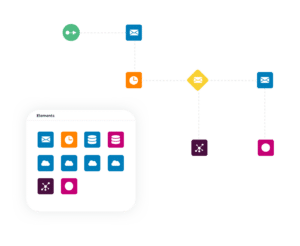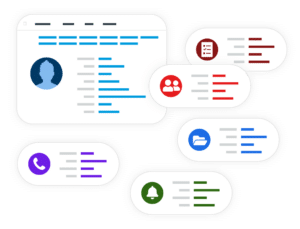Top 10 Reasons to Link Marketing Automation with Sales and Service
I apologize for the clickbait title, but who can resist a good Top 10 list? I know I cannot.
As a CRM platform vendor, we help our customers use our products across marketing, sales, and service. With Sugar Market, Sell, and Serve, we work with marketers on how they can best engage with sales and service teams to drive revenue and customer satisfaction.
Here are some compelling reasons to make sure marketing shares a common toolset with sales and service.
1. Ensure a Rapid and Accurate Lead Assignment and Follow-Up Processes
B2B sales leads usually cost an organization between $50 to $500, depending on your industry and business model. If you market for leads, the leads handling process is worth investing in. With marketing automation, you create lead capture forms and embed them on your website. Leads details are captured on a platform where marketers and sellers can collaborate to engage further at the right time. Sellers receive the context they need to respond in a relevant and effective manner. Each lead is tracked with status and disposition details to help you make sure nothing slips through the cracks.
2. Provide Marketing Engagement History to Understand Your Customer’s Interest
B2B prospects usually research products and services over some time. Sometimes, interest is on and off again over several years as organizations review their needs. With marketing automation and sales systems aligned, a marketer can track the repeated interest and respond with relevancy. With access to historical marketing engagement details, a seller can better understand the context of an inquiry and respond appropriately.
3. Enable Sellers to Initiate Lead Nurture Marketing Campaigns from Their SFA (Sales Force Automation) Tool
With longer sales cycles, sellers can sometimes use some help. With a well-integrated sales and marketing automation system, a seller can quickly initiate a multi-step marketing program to help them stay on top of their prospect’s minds with high quality information. This can be a significant help with lead qualification, opportunity pursuit, and account management processes.
4. Gain Richer Marketing Segmentation Data for More Targeted Messaging by Also Including SFA And Service Customer Information
Marketing messaging is most successful when it is relevant to a targeted audience. Audiences are usually segmented by information provided by their prospects as well as the publicly available information. When you integrate marketing with sales systems, marketers can extend the segmentation based on many more data points from the customer relationship. Segmentation can be based on qualification and opportunity information collected by sales. It can be extended by data integrated with the sales system from external sources, such as order history from ERP (Enterprise Resource Planning) systems.
5. Close the Loop to Calculate the ROI of Marketing Campaign Expenses by Linking Leads to Opportunities
Marketing is a cost to an organization. Every marketer is eager to demonstrate how those costs are worth every penny by the added revenue it helps the sales team bring in. When marketing and sales share the same platform, that return on investment (ROI) calculation becomes a lot easier. Inquiries and leads link to opportunities connected to orders. That unbroken link makes it possible to trace the costs of marketing campaigns to the revenue it brings in.
6. Create a Customer Communication Engine. Market in Response to the Full Customer Journey, not Just the Lead Acquisition Stage
Marketing is not just about gaining new customers; it is also about expanding the relationship with existing customers and providing helpful information to your customer base. There are many touchpoints in a customer relationship where marketing communications can play a vital role. Marketing can help in the customer onboarding process, in a product onboarding process, with regular Voice of the Customer surveys, with customer service satisfaction surveys, or NPS (Net Promoter Score) surveys. With combined marketing, sales, and service platforms, marketing can design and listen for engaging opportunities.
7. Establish a Unified Organizational KPI (Key Performance Indicators) Reporting Platform by Unifying Marketing, Sales, and Service Customer Information
It is very worthwhile to align marketing and sales terminology. When the marketing, sales, and customer service teams get together and define their success measurements, it leads to better collaboration and results. Combining this effort with a shared data platform makes it possible to design and share result reporting and hone business processes across the teams.
8. Eliminate Spreadsheet Data Silos by Using a CRM (Customer Relationship Management) System with a Configurable Data Model
When departments use siloed data systems, spreadsheets are inevitably used to bridge the gap and translate results. Do not accept your data living on these inaccessible spreadsheet islands. Combine your marketing, sales, and service systems into a common platform that is configurable enough that it can host all your information needs.
9. Graduate from Contact-Based Marketing to Account-Based Marketing
Marketing automation systems are traditionally very contacts centered around a marketable email address. In B2B, account-based marketing is essential. While some marketing automation systems (such as our Sugar Market) have account-based concepts, the sales and service teams also perform so much account management. When marketing shares a platform with sales and service, designing effective account-based marketing programs becomes easier.
10. Launch Product Information Nurture Campaigns in Response to Customer Service Cases
Your customer service teams have very information-rich engagements with your customers. Marketers who have access to that information can help in so many ways. One handy way for marketers to engage and serve the customer is to respond to product-related service requests. For instance, if your customer is repeatedly engaging with product support, there is an opportunity to initiate a product education campaign.
I hope my Top 10 list provided some inspiration. I would love for it to be a Top 100 list, and I welcome any new ideas in the comments section on SugarClub.
This article was originally published on the SugarClub Leadership Lounge, where Sugar’s leadership team discusses what’s on their minds and welcomes the SugarClub community to ask any questions or share insights about customer experience, CRM, technology, building companies, or anything else!




